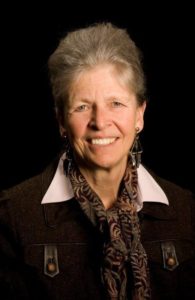Not many people can claim James Watson, co-discoverer of DNA’s double helix, as their thesis advisor. Then again, not many people can claim quite as many pioneering discoveries in the field of RNA research as Joan Steitz.

Steitz, a Yale University Sterling Professor of molecular biophysics and biochemistry and a Howard Hughes Medical Institute investigator, will share her story and insights during the Murray Honors Visiting Scholar lecture, 8 p.m. Oct. 12 in the Lory Student Center Ballroom.
Noncoding RNA
Steitz’s driving quest has been to better understand noncoding RNA and how it controls what is expressed by our genes. These strands impact essential functions in the body, such as how the immune system changes and how the brain develops.
Steitz and her lab discovered, in 1979, small nuclear ribonucleoproteins (snRNPs or “snurps”), short pieces of RNA that help to splice new sections of RNA. This revelation set into motion the race to discover other small RNAs, bits of genetic code that don’t make proteins but are integral for countless biological processes. Her work has helped to explain why the human genome is smaller than expected – and also has implications for treating diseases, such as lupus and certain forms of cancer
Pioneer, advocate of women in the sciences
Throughout her long career, Steitz has been an advocate for women in the sciences. Because she did not see women working in the research field, she originally planned to attend medical school. A summer job in a research lab after college, however, helped to change her mind and encouraged her to follow her passion into research. She entered graduate school at Harvard University to study biochemistry and molecular biology in 1963 and was the only woman in her class – and the first to have Watson as a Ph.D. advisor.
Before joining Yale’s faculty in 1970, she completed her postdoctoral work at the Medical Research Council Laboratory of Molecular Biology in Cambridge, UK. She is a member of the National Academy of Sciences, American Academy of Arts and Sciences, Institute of Medicine, among others, and the recipient of numerous awards and honors.
Free lectures
Steitz’s Oct. 12 lecture is titled “Lupus and Snurps: from Bedside to Bench and Back Again” and is free and open to the public. She will also be delivering a technical lecture on her research at 4 p.m. Oct. 13 in the Lory Student Center Theater.
The Murray Honors Visiting Scholar series is co-hosted by the Honors Program and the College of Natural Sciences and is made possible by a gift from Jack and Nadine Murray. This is the series’ second year. Last year’s inaugural visiting scholar was Nobel Laureate Carol Greider, who studies telomeres.